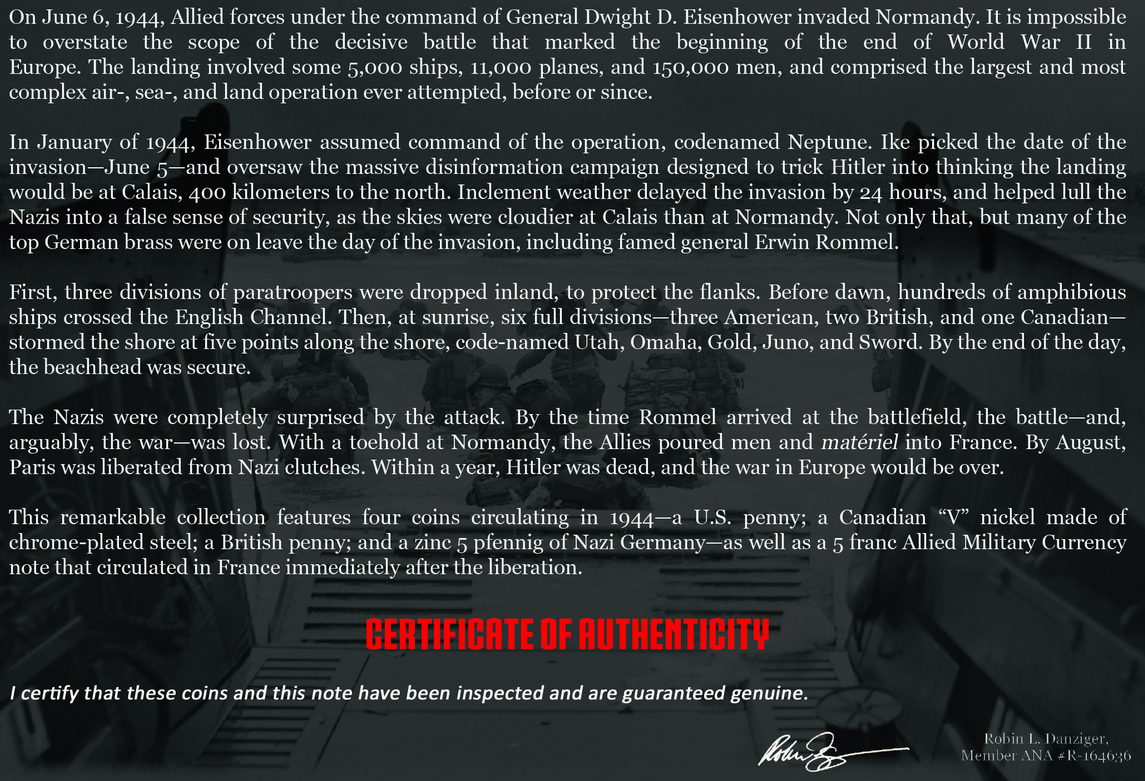Collective History - The collector's studio
D-Day: June 6, 1944, Operation Neptune & The Allied Invasion of Normandy (five piece album)
D-Day: June 6, 1944, Operation Neptune & The Allied Invasion of Normandy (five piece album)
Couldn't load pickup availability
On June 6, 1944, Allied forces under the command of General Dwight D. Eisenhower invaded Normandy. It is impossible to overstate the scope of the decisive battle that marked the beginning of the end of World War II in
Europe. The landing involved some 5,000 ships, 11,000 planes, and 150,000 men, and comprised the largest and most
complex air-, sea-, and land operation ever attempted, before or since.
In January of 1944, Eisenhower assumed command of the operation, codenamed Neptune. Ike picked the date of the
invasion—June 5—and oversaw the massive disinformation campaign designed to trick Hitler into thinking the landing
would be at Calais, 400 kilometers to the north. Inclement weather delayed the invasion by 24 hours, and helped lull the
Nazis into a false sense of security, as the skies were cloudier at Calais than at Normandy. Not only that, but many of the
top German brass were on leave the day of the invasion, including famed general Erwin Rommel.
First, three divisions of paratroopers were dropped inland, to protect the flanks. Before dawn, hundreds of amphibious
ships crossed the English Channel. Then, at sunrise, six full divisions—three American, two British, and one Canadian—
stormed the shore at five points along the shore, code-named Utah, Omaha, Gold, Juno, and Sword. By the end of the day,
the beachhead was secure.
The Nazis were completely surprised by the attack. By the time Rommel arrived at the battlefield, the battle—and,
arguably, the war—was lost. With a toehold at Normandy, the Allies poured men and matériel into France. By August,
Paris was liberated from Nazi clutches. Within a year, Hitler was dead, and the war in Europe would be over.
This remarkable collection features four coins circulating in 1944—a U.S. penny; a Canadian ”V“ nickel made of chrome-plated steel; a British penny; and a zinc 5 pfennig of Nazi Germany—as well as a 5 franc Allied Military Currency
note that circulated in France immediately after the liberation.
Weight/Dimensions: 124 g | 11" L x 7.5" W x 0.1" H
Share








